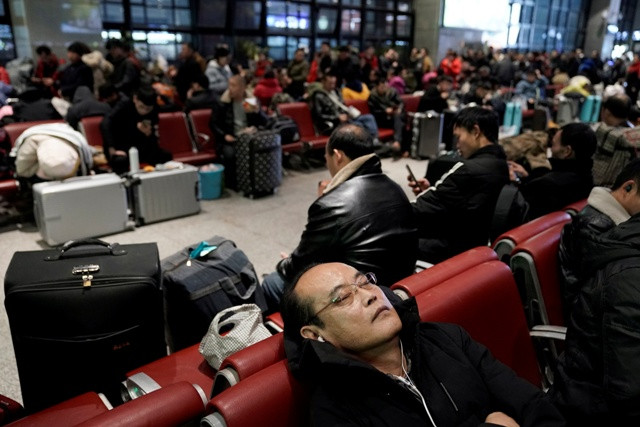Following China's first negative population growth in nearly 60 years, the reasons for the continued decline in fertility levels have become a focal point of academic discussion. Beyond the widely noted decrease in the total fertility rate, the trend of delayed childbearing is also significant.
Since 1990, the trend of Chinese individuals postponing their first marriage has become increasingly evident, with both men and women's average age at first marriage consistently rising. In a society where childbirth within marriage dominates, delaying marriage directly leads to delayed childbearing. This impacts fertility levels by reducing the number of women giving birth and lowering the likelihood of having more children. Over the past two to three decades, the average childbearing age for Chinese women has gradually increased. The average age for first and second childbirth rose from around 24 and 28.80 years in 2000 to 26.65 and 30.80 years in 2010, respectively.
Unveiling the Truth Behind Delayed Marriages and Childbearing
A recent study by Zhang Xianling, Associate Professor at the Central University of Finance and Economics, and Sheng Yinan, Professor at the Capital University of Economics and Business, published in the "Population Research" journal, delves into this phenomenon. Using data from national censuses, 1% population sample surveys, and 0.1% population change sample surveys from 1990-2020, the study reveals many truths behind the trend of delayed marriages and childbearing.
The research, titled "Marriage and Childbearing Delay in China from 1990-2020: Trends and Typical Features," found that from 1990-2020, the peak childbearing age for Chinese women shifted from 23 to 27 years, with a decline of over 55% in the birth rate at the peak age. During this period, the average childbearing age for women consistently rose, but the rate of delay varied over time. The delay was more pronounced between 2000-2010 than 2010-2020.
Education: A Significant Factor
The study identifies education as a crucial factor in delaying childbearing. From 1990-2020, women of all educational levels showed a trend of delayed childbearing, with those having higher education delaying more rapidly. The impact of education on delaying childbearing varied by birth order, with the most significant effect seen in first births.
Specifically, when comparing the unmarried proportions of different educational groups in 1990 and 2020, several patterns emerge:
- Higher education levels significantly delay the age of first marriage, as seen by the rightward shift in the unmarried proportion curve with increasing education.
- The unmarried proportion curves for those with primary education or less and junior high education are very similar, while those with higher education differ significantly, indicating a pronounced effect of higher education on delaying marriage.
- For men aged 32 and above with primary education or less, the unmarried proportion is higher than other groups, suggesting that men with the lowest education levels are at a significant disadvantage in the marriage market.
Moreover, the study reveals a new trend: compared to 1990, the disadvantage of low-educated individuals in the marriage market intensified by 2020. This suggests that the impact of education on delaying marriage for certain groups is expanding.
Gender Differences in Marriage Trends
When considering gender, the study found significant differences in the impact of education on marriage delays for men and women. In 1990, among women, those with higher education had a higher unmarried proportion across all ages compared to those with primary education or less. However, this difference diminished after age 40, indicating that while higher education delayed women's age of first marriage, it didn't significantly impact their lifetime likelihood of marriage.
For men, in contrast, those with higher education had a higher unmarried proportion than those with primary education or less until age 26. After this age, men with primary education or less had a significantly higher unmarried proportion, suggesting that while higher education delayed men's age of first marriage, it also enhanced their marriage prospects in the long run.
By 2020, the influence of education level on marriage delay continued to show pronounced gender differences. For women, those with higher education remained unmarried across all ages compared to those with primary education or less. For men, the age threshold shifted to 29.
Looking Ahead
The study notes that while China remains a society where most people marry, the trend of delayed marriage and its accelerating pace align with global patterns. Currently, with childbirth within marriage still predominant in China, delaying marriage directly leads to delayed childbearing, impacting fertility levels, especially in a low fertility rate era.
The research suggests that as educational levels continue to rise, population mobility increases, employment pressures grow, and individual values evolve, the trend of delayed marriage and childbearing in China may intensify further. Particularly for disadvantaged groups in the marriage market, such as rural men with low education levels, the rate of lifelong singlehood might continue to rise. The study recommends that the nation prioritize these changing trends and characteristics in its population development strategy, establish a supportive policy system for marriage and childbearing, and promote long-term balanced population development.






